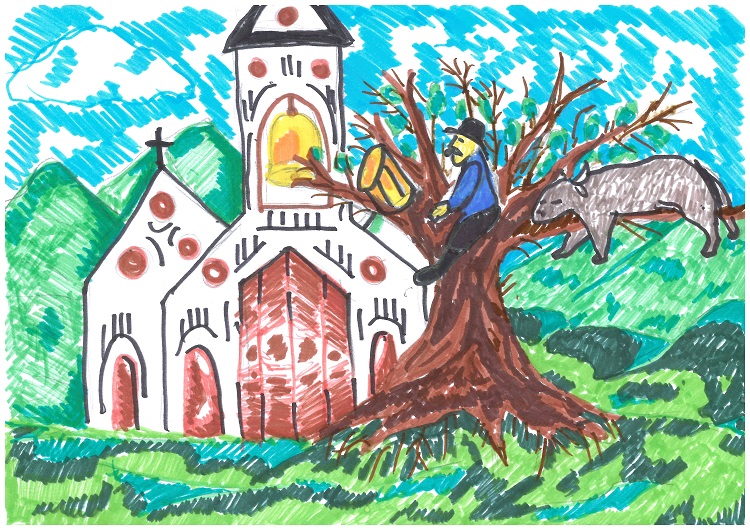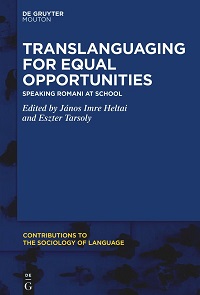
How to make Romani language part of school learning in a way that makes it a success for children, teachers, and parents? The Erasmus+ project, coordinated by the Károli Gáspár University of the Reformed Church, sought to answer this question.
Translanguaging for Equal Opportunities: Speaking Romani at School
We talked to Dr János Imre Heltai, project coordinator, about the results of their award-winning project.
What was the need that prompted the project?
There had been already an existing cooperation between the Magister Primary School in Tiszavasvár and the Károli Gáspár University of the Reformed Church, and we wanted to institutionalise this and interpret our experiences internationally. This was the main motivation to start the project, and the second motivation was to raise funds for our activities.
 Created by Robert Abri
Created by Robert Abri
What was the main objective of the project?
The aim was to make the ways of speaking used at home by school-attending children part of learning. An important aspect of the project was to introduce the Romani language into the school as it is spoken locally in daily use. The standardized Romani – known by many as Lovari – is quite far from what Roma families in Tiszavasvár speak in everyday life, therefore there is no match between the language that could be offered theoretically as a foreign language and the language spoken in everyday life. We worked not only with teachers, but also with parents, trying to involve the whole community.
What was the basic situation in the school that this project sought to find a solution for?
Before we started working together, the overall experience was that children had difficulties getting along in school, many of them were considered immature for school. One reason for this is that they are multilingual children, and the school readiness exams are conducted in Hungarian. They must perform in a Hungarian monolingual school with different language competences than what is expected of them at school. From this starting point, it was exceedingly difficult to achieve even minimal pedagogical success with these children.
What activities were carried out during the project?
 All our activities were aimed at producing two project products: the short films and the book. Our original plan, that we, researchers, and university students would go to the school and make videos there, could not be realized. In the absence of our personal presence, the teachers recorded the lessons, and we analysed them and gave feedback in online sessions.
All our activities were aimed at producing two project products: the short films and the book. Our original plan, that we, researchers, and university students would go to the school and make videos there, could not be realized. In the absence of our personal presence, the teachers recorded the lessons, and we analysed them and gave feedback in online sessions.
The result of the joint work, 35 video tutorials were created, which can be viewed by anyone in the project's online video library. The videos are divided into three parts, each with a classroom scene in the centre, highlighting important moments of learning and teaching that are characterized by translanguaging. Furthermore, a book, with the same title as the project was produced: Translanguaging for Equal Opportunities: Romani speech atschool, which shows how translanguaging can support the bilingual Roma students in monolingual school systems.
In addition to Tiszavasvár, a primary school in Simo, Slovakia also participated in the project. Was Romani the focus in Simo as well?
Simo is a village in Slovakia with many Hungarians and a relatively significant Romani-Hungarian bilingual community. There are two primary schools in the village, one in Slovak and one in Hungarian, with Romani-speaking children (besides Hungarian) attending the latter. This is a general pattern in the Carpathian Basin: children from Roma communities very often attend Hungarian-language schools.
Apart from the two schools, who else has participated in the partnership?
Colleagues from the University of Jyväskylä from Finland, from the university's teacher training institute and from the multilingualism research centre, and as a project advisor Prof. Li Wei (University College London), one of the developers of the scientific concept of translanguaging. He wrote the foreword for this volume and was a speaker at one of our online conferences. In addition, another colleague from UCL's Eastern European Institute of Cultures and Languages joined the project. Our third academic partner was the Constantine the Philosopher University in Nitra. The university’s Faculty of Central European Studies provides Hungarian-language education, so they are involved, among others, in the Hungarian-language teacher training in Slovakia.
What was the biggest benefit of the project for the participants?
The teachers from different institutions and the participants from higher education could learn from each other, and together develop pedagogical practices that are useful for others as well. Also, the children were given a chance to be more successful in their studies.
What does the Excellence Award mean to you?
It is a particularly important confirmation that we were considered worthy by the experts, and we are pleased that they see that this was a valuable and outstanding project. We hope that it will be also recognized elsewhere that a great professional value was created in this cooperation.
|
Institution: Károli Gáspár Reformed University Project title: Translanguaging for Equal Opportunities: Speaking Romani at School Measure: Strategic Partnerships for Higher Education (KA2 HED) Coordinator: János Imre Heltai, Dr Project website: kre.hu/romanitranslanguaging/ |
Felícia Deme
Tempus Public Foundation,
Directorate of Communication
Last modified: 19-12-2023















